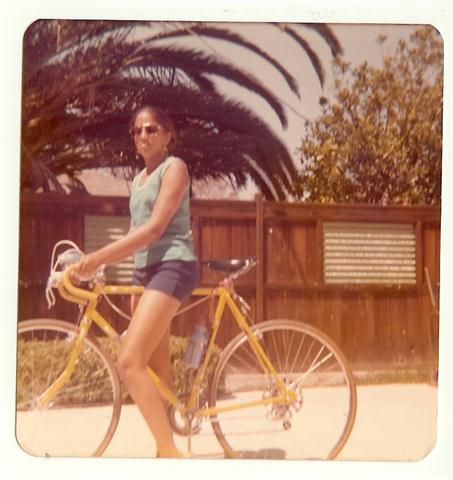A South LA Filmmaker Captures the Stories of African-American Cyclists on Film

WHAT STAYED WITH HER were the stories, said Yolanda Davis-Overstreet, South LA native and director of "Ride: In Living Color," a documentary currently being filmed on African-American cyclists.
The stories started flowing from the moment she walked into City of Bicycles in Inglewood in 1996, and they didn't stop coming over the hours spent on 50-80 mile group training rides around Los Angeles. The riders' mutual enthusiasm for cycling made it easier for people from different walks of life to get to know each other as individuals and share their histories more openly, she said.
It would be almost 15 years before Davis-Overstreet started to gather those stories more formally. Beginning with the 2011 Tour de Palm Springs, she documented the voices of participating riders of color. She then moved on to interview cyclists from Los Angeles and around the US, including Olympians Giddeon Massie and Nelson Vails, and local professional racer and mentor to inner-city cyclists, Rahsaan Bahati.
Things took off after a trip to Oakland, where Davis-Overstreet saw the political possibilities of the bicycle. Seeing African-Americans come together in the National Brotherhood of Cyclists to combat the high incidence of deaths linked to physical inactivity and poor diet in communities of color was a powerful experience. So was meeting local activists from Richmond Spokes and Bikes 4 Life who help at-risk teens by engaging and employing them in cycling and green industries that benefit the local community. Cycling, she realized, had brought people together around issues of social justice and galvanized them to take action to make change.
Upon her return to Southern California, she sought out activists of color in Los Angeles like Tafarai Bayne of T.R.U.S.T. South LA (and CicLAvia board member) and John Jones III of the East Side Riders (groups that will be profiled on South LA Streetsblog in the coming weeks). Each spoke of how members of the community could be activists for safer streets, and that cycling could play a role in achieving that goal. The East Side Riders' group, for example, teaches young kids to invest in their communities on rides to feed the homeless living in their own neighborhoods.
As for the specific focus on African-Americans? We have a story to tell, said Davis-Overstreet. “Telling stories is community”--it is how we create community and how we know what we come from. Moreover, they are stories not often heard by those outside the community. How many people know, for example, that the 1899 World Champion cyclist (and two-time US Champion) was a 20 year old African-American riding out of Massachusetts named Marshall “Major” Taylor? That he managed to be champion despite being physically assaulted for being Black by other riders during races, even narrowly escaping a lynching after a race?
Stories like Major Taylor's are not often part of the larger historical narrative of cycling. And, although there are outstanding African-American competitive cyclists and many riders of color in the streets today, neither the cycling industry nor the activist community is particularly reflective of that diversity. Davis-Overstreet noted that she was one of just a few African Americans present at events like Bike Summit and Interbike. Even though the people she met there voiced their desire to see a more diverse set of participants, many readily acknowledged that they were not sure how to reach out to those communities and begin those conversations.
"Ride: In Living Color" may play a role in making that dialogue easier, even while still being filmed. Davis-Overstreet has made an effort to connect insiders in the cycling industry that she has met on her journey with activists and riders of color, facilitating their conversations and conference calls on a regular basis. Others she has profiled have since been inspired to begin documenting their own stories and those of people around them. In the end, however, the film may offer more insight into our commonalities than our differences. Davis-Overstreet's view that the bike is a tool to help “find our own internal happiness” and be a “vehicle for change in any community,” is something that anyone who regularly rides a bike is likely to agree with.
Davis-Overstreet aims to finish filming by April. More on the film and the filmmaking team can be found here: Ride: In Living Color






